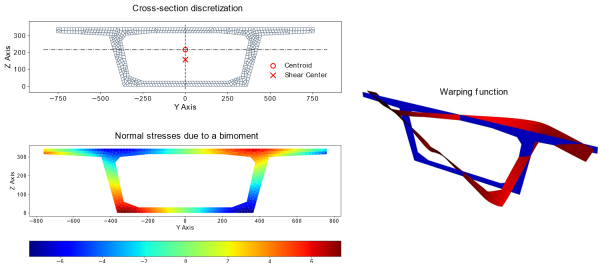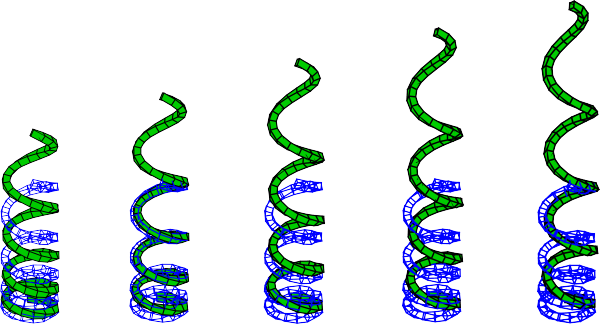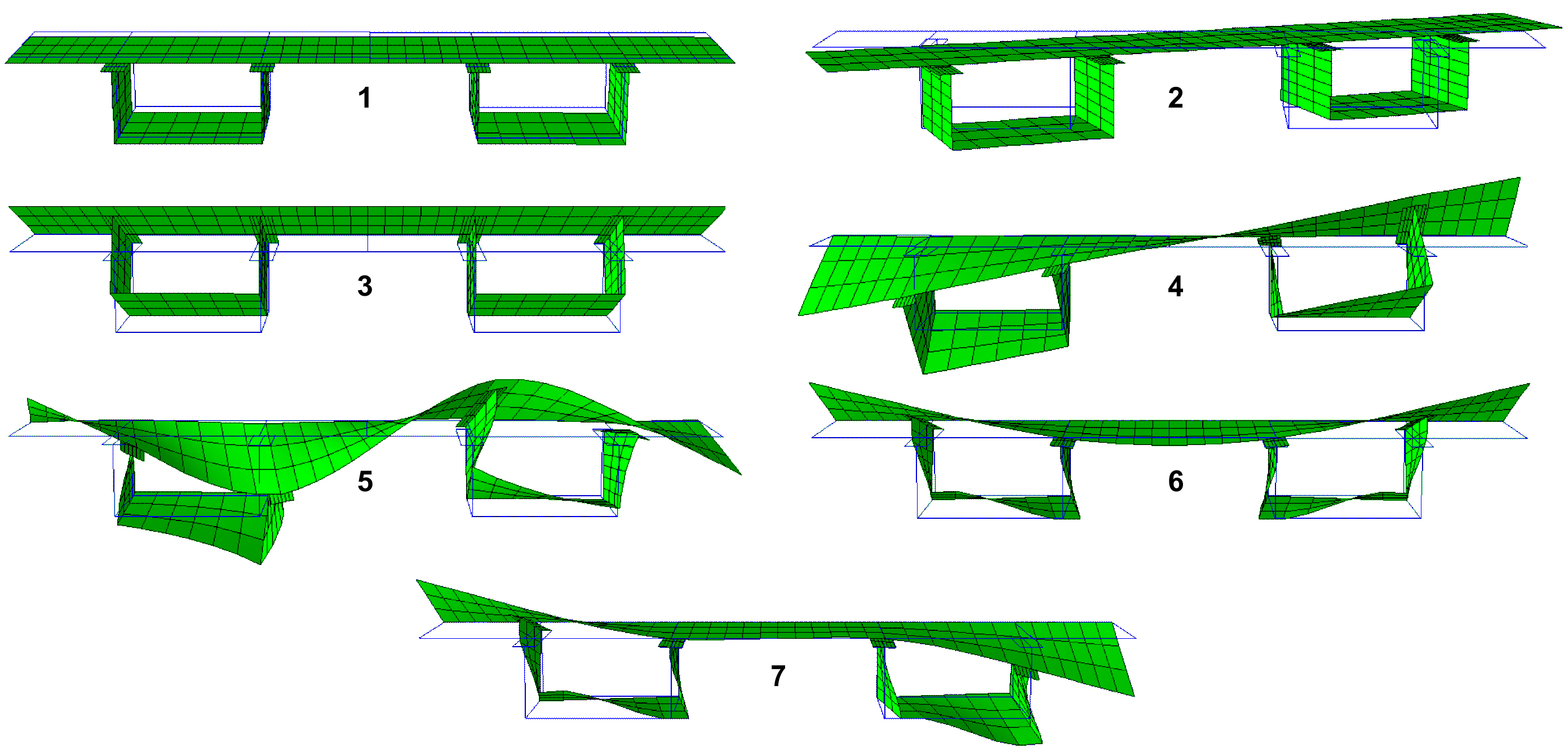Research
Areas of interest
- Steel and steel-concrete composite structures
- Structural stability
- Thin-walled members
- Generalised Beam Theory (check out our webpage)
- Geometrically exact beam theories
Awards and distinctions
- 2025 Included in the top 2% world ranking science-wide author database of standardized citation indicators (https://elsevier.digitalcommonsdata.com/datasets/btchxktzyw/8).
- 2024 Included in the top 2% world ranking science-wide author database of standardized citation indicators (https://elsevier.digitalcommonsdata.com/datasets/btchxktzyw/7).
- 2023 Outstanding Paper Award in the category "Analytical Research", for the paper “Applications of the Geometrically Exact Beam Theory to Non-Prismatic Beams”, by Rodrigo Gonçalves, presented in the 9th International Conference on Thin-Walled Structures, 29/11 - 1/12, Sydney, Australia.
- 2023 Included in the top 2% world ranking science-wide author database of standardized citation indicators (https://elsevier.digitalcommonsdata.com/datasets/btchxktzyw/6).
- 2022 Honorable mention of the 2022 Ferry Borges competition (best paper published in 2019-21, in the field of Structural Engineering), for the paper “Combining shell and GBT-based finite elements: linear and bifurcation analysis”, published in Thin-Walled Structures in 2020, authored by David Manta, Rodrigo Gonçalves and Dinar Camotim.
- 2022 Included in the top 2% world ranking science-wide author database of standardized citation indicators (https://elsevier.digitalcommonsdata.com/datasets/btchxktzyw/4).
- 2022 Vinnakota award (Structural Stability Research Council), for the paper "Combining the advantages of GBT and shell finite elements: linear/non-linear analyses and modal decomposition", authored by the student D. Manta (recipient of the award) and his supervisors, Rodrigo Gonçalves and Dinar Camotim.
- 2021 Honorable mention of the 2019 Ferry Borges competition (best paper published in 2016-18, in the field of Structural Engineering), for the paper “GBTUL 2.0 – a second-generation code for the GBT-based buckling and vibration analysis of thin-walled members”, published in Thin-Walled Structures in 2018, authored by Rui Bebiano, Rodrigo Gonçalves and Dinar Camotim.
- 2021 Included in the top 2% world ranking science-wide author database of standardized citation indicators (https://elsevier.digitalcommonsdata.com/datasets/btchxktzyw/3?fbclid=IwAR1vdz).
- 2021 Honorable Mention of the Vinnakota award (Structural Stability Research Council), for the paper "On the combination of shell and GBT-based beam finite elements”, authored by the student D. Manta (recipient of the award), Rodrigo Gonçalves and Dinar Camotim.
- 2020 Included in the top 2% world ranking science-wide author database of standardized citation indicators (https://journals.plos.org/plosbiology/article?id=10.1371/journal.pbio.3000918).
- 2020 Vinnakota award (Structural Stability Research Council), for the paper "A geometrically exact curved thin-walled beam finite element accounting for cross-section deformation", authored by the student N. Peres (recipient of the award) and his supervisors, Rodrigo Gonçalves and Dinar Camotim.
- 2019 Vinnakota award (Structural Stability Research Council), for the paper "Local buckling of RHS members with small-to-large corner radii subject to combinations of axial force and biaxial bending”, authored by the student L. Vieira (recipient of the award) and his supervisors, Rodrigo Gonçalves and Dinar Camotim.
- 2017 First place of the McGuire Award for Junior Researchers Medal Competition, awarded by the Structural Stability Research Council (SSRC), for contributions to structural stability research after obtaining the PhD degree.
- 2016 Honorable Mention of the McGuire Award for Junior Researchers Medal Competition, awarded by the Structural Stability Research Council (SSRC).
- 2013 First place in the Ferry Borges competition category A (best paper published in 2010-12, in the field of Structural Engineering), for the paper “A large displacement and finite rotation thin-walled beam formulation including cross-section deformation”, published in Computer Methods in Applied Mechanics and Engineering in 2010. Awarded by the Portuguese Association of Structural Engineering (APEE), LNEC and the Portuguese Order of Engineers.
- 2013 Honorable Mention of the Ferry Borges competition category A, for the paper “A geometrically exact approach to lateral-torsional buckling of thin-walled beams with deformable cross-section”, published in Computers & Structures in 2012.
- 2012 Honorable Mention of the Vinnakota award (Structural Stability Research Council), for the paper "GBT-Based assessment of the buckling behavior of cold-formed steel purlins restrained by sheeting”, authored by the student A. Graça (recipient of the award), C. Basaglia and the supervisors of the recipient, Dinar Camotim and Rodrigo Gonçalves.
Publications
Examples
Nonstandard influence surfaces

The figure shows the influence surface for distortion on a curved bridge, calculated using GBT. More details in Henriques et al., Structures, 2025.
Large displacement analysis of tapered and curved beams

The solutions using geometrically exact curved and tapered beam elements match accurately the shell model solutions. More details in Gonçalves, Int. J. Struct. Stab. Dyn., 2024.
Dynamic analysis of an L-shaped frame with a tapered joint, combinig GBT and shell finite elements

The GBT elements are used in the prismatic zones and the shell elements elsewhere. The solution is accurate (notice the cross-section deformation at the free end) when 9 deformation modes are included in the GBT element (extension, major/minor axis bending, torsion and 5 local-plate modes). More details in Manta et al., Thin-Walled Structures, 2021.
Cross-section stress calculator including bi-axial shear, bi-moment and bi-shear (programmed by Tomás Silveira)

Collapse analysis of an L-frame using geometrically exact beam finite elements

The pre- and post-collapse behaviour of the frame is accurately calculated using geometrically exact beam elements with warping transmission. Residual stresses and member imperfections are taken into consideration. (more details in the 2009 Steel and Steel-Concrete Composite Construction Conference paper).
Lateral-torsional buckling of a channel cantilever beam
 |
The cantilever is subjected to a tip load at the flange/web junction. Only eight geometrically exact beam finite elements were employed, which allow for cross-section warping, distortion and plate-like bending. This visualization shows several deformed configurations, each associated with a different load level. A comparison with the results obtained with MITC shell finite elements (not shown) demonstrates that the proposed beam finite element leads to extremely accurate results for large displacements and finite rotations combined with severe cross-section distortion. (more details in the CMAME paper in 2010). |
Extension of a helical beam
The helical beam is modelled using 16 equal length cubic curved geometrically exact Kirchhoff beam elements. (taken from the Master thesis of David Manta, 2015)
Torsional buckling of regular convex polygonal tubes

Regular polygonal tubes have double eigenmodes. The torsional buckling mode corresponds to a helix in the 2D eigenmode space. This fact can only be observed through GBT-based analyses. (more details in the TWS paper in 2013)
Steel-concrete composite bridge
|
Top: first GBT cross-section deformation modes: (1) axial extension, (2) major axis bending, (3) minor axis bending, (4) torsion, (5) distortion, (6-7) diaphragm induced symmetric and anti-symmetric distortion. Right: deformed configurations (x1E5) of a simply supported bridge without/with diaphragms at mid-span, subjected to an eccentric 1 kN force (only half of the bridge is shown). The GBT results were obtained with 3 beam finite elements. (more details in the SCS paper in 2010) |
 |

